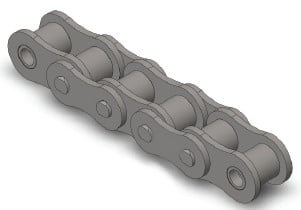Roller chains are a single on the most effective and value eff ective solutions to  transmit mechanical power involving shafts. They operate over a wide range of speeds, deal with huge doing work loads, have extremely little power losses and therefore are typically inexpensive compared with other procedures
transmit mechanical power involving shafts. They operate over a wide range of speeds, deal with huge doing work loads, have extremely little power losses and therefore are typically inexpensive compared with other procedures
of transmitting power. Productive choice involves following various rather very simple ways involving algebraic calculation and the utilization of horsepower and services issue tables.
For any offered set of drive problems, there are a variety of probable chain/sprocket confi gurations which can efficiently operate. The designer consequently must be conscious of several primary assortment principles that when utilized the right way, help balance all round drive effectiveness and value. By following the measures outlined in this segment designers needs to be ready to generate choices that meet the demands with the drive and are expense eff ective.
Standard Roller Chain Drive Concepts
? The suggested number of teeth to the small sprocket is 15. The minimum is 9 teeth – smoother operation is obtained with much more teeth.
? The suggested optimum amount of teeth for the huge sprocket is 120. Note that whilst a lot more teeth will allow for smoother operation acquiring as well several teeth leads to chain jumping off the sprocket right after a reasonably smaller quantity of chain elongation due to wear – That’s chains having a extremely substantial amount of teeth accommodate less put on in advance of the chain will no longer wrap all-around them correctly.
? Speed ratios ought to be 7:1 or much less (optimum) rather than better
than 10:1. For larger ratios the usage of multiple chain reductions is suggested.
? The advised minimum wrap of the little sprocket is 120°.
? The encouraged center distance involving shafts is 30-50 pitches of chain. You will find two exceptions to this as follows:
1. The center distance need to be greater compared to the sum from the outdoors diameters of the driver and driven sprockets to stop interference.
2. For speed ratios greater than three:1 the center distance shouldn’t be less compared to the outdoors diameter on the substantial sprocket minus the outside diameter in the modest sprocket to assure a minimal 120° wrap all over the little sprocket.
